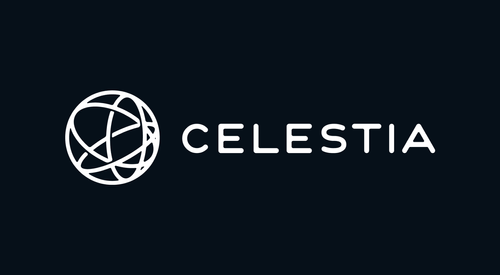Introduction
"DePin" refers to decentralized physical infrastructure networks that use token incentives to coordinate a network of resources for consumption. It is one of the more interesting real-world applications of crypto and is expected to be a strong narrative in 2024. DePIN projects often have significant addressable markets e.g., Helium lies at the intersection of the Internet of Things and the telecommunications sector.
DePIN is based on the premise that leveraging a network of distributed and incentivized participants can create better and more cost-efficient outcomes than a centralized entity. It differs from the traditional method where companies would handle the entire process of building and maintaining their infrastructure.
DePIN vs. Traditional Physical Network Structures: What’s the Catch?
DePIN has become a buzzword in crypto and has developed into a strong narrative. This is in part fueled by the current Solana ecosystem craze. Most DePIN projects are either built or have migrated to Solana due to its low latency and high throughput environment. The recent attention on DePIN applications begs the question - how do they compare to traditional physical networks? Can they really live up to the hype, or is it purely speculative?
DePIN networks allow for open participation enabled by tokens. Like most crypto protocols, DePIN projects typically start by offering tokens that disproportionately reward early users for purchasing and operating hardware, even when demand for the application has not picked up yet. This is similar to the early days of Bitcoin mining, where initial miners received thousands of BTC each month as rewards. This strategy leads to supply preceding demand. The token price and demand for the DePIN network are intertwined (as higher token price = higher rewards = more participation) which can lead to volatility in the network’s coverage. During the bear market, when token prices are underperforming, these entities may have to weather periods of low participation. Tokens, of course, have often proved unsustainable over longer timeframes. That said, it is feasible that some projects can reach an escape velocity where they achieve meaningful sticky adoption to become viable businesses.
Cost is also a large factor as physical network structures require huge upfront costs and logistical hurdles. A premise for DePIN is that its lower cost basis means it can offer cheaper coverage - however, it remains to be seen if this can be achieved at massive scale over the long term. Another point is that traditional physical network infrastructures often rely on localization. Taking the example of internet / 5G connectivity, DePIN’s reliance on a decentralized network of hotspots can help democratize internet access in areas where there isn’t sufficient network coverage.
With that said, it is clear that interest in DePIN is partly driven by speculation. It is difficult to foresee at present if DePIN projects today can meaningfully break through the traditional physical network market share (e.g., 5G alone), but it is currently a compelling narrative that can potentially capture more retail attention.
So where are we at today?
Types of DePIN
- Wireless Networks (5G networks, IoT protocols)
- Sensor Networks (Using sensors to collect real-time data)
- Cloud storage
- Energy Networks (Distributed energy sources)
Price Performance since September 2023 (vs ETH)
DePIN tokens have seen an impressive run since Q4 2023.
Top performers include:
- Hivemapper (HONEY),
- Helium (HNT),
- Bittensor (TAO) and
- Render (RNDR)
Laggards include:
- Livepeer (LPT)
- Pollen (POLLEN)
- Aleph.im (ALEPH)
Mega Caps ($1b FDV+)
Filecoin (FIL)
- Filecoin aims to incentivize a global network of computers to provide a filesharing/storage service. Its vision is to become the cheapest and easiest way to store data on the internet in a decentralized way.
- The system is maintained by miners who make storage available to users who pay the miners for this data.
- The Filecoin Virtual Machine (FVM) is a WASM-based VM that enables projects to build atop Filecoin, such as dataDAOs and financial applications for storage providers. In early 2024, the FVM will become less coupled with Filecoin as it moves towards becoming configurable as a generic platform to execute smart contracts.
- Filecoin seeks to incentivize large-scale storage, with a tiered payment system depending on storage time and space required.
- FIL’s utility includes:
- Payments
- Collateral (miners are required to lock up FIL)
- Incentives
- EIP-1559-like burn
- Website / Twitter / CoinGecko
Bittensor (TAO)
- Bittensor aims to build a permissionless, decentralized, and censorship-resistant infrastructure for all AI development.
- While not strictly DePIN, Bittensor will have various different subnets some of which could be classified as DePin.
- It has various subnets with different targeted purposes that provide incentives for the production of machine intelligence e.g. a subnet focused on image generation, a subnet focused on text prompting, etc.
- Check out Nansen’s introduction to Bittensor here.
- Website / CoinGecko
Render (RNDR)
- Render is a platform that gives access to decentralized GPU resources to render high-quality 3D media. It aims to create a network of GPUs for designers/artists to access computational resources for rendering high-quality animations/graphics etc.
- This is because rendering processes can be expensive and time-consuming for high-quality content, and a decentralized network could greatly accelerate the time taken and costs associated with rendering.
- Render recently moved from Ethereum to Solana.
- RNDR is distributed as rewards to GPU owners for contributing their computing power.
- Website / Twitter / CoinGecko
Helium
- Helium is one of the top DePIN projects on the Solana blockchain that incentivizes people to build and manage physical telecommunication networks.
- The Helium Network is built by “hosts” who mine HNT, the native token of the protocol, in exchange for creating coverage and transferring data over the network.
- Currently, there are over 600k hotspots that provide connectivity and coverage all over the world.
- While centralized corporations build their networks in a top-down process, decentralized crypto-economic protocols like Helium are bottom-up and fully incentivized.
- Website / Twitter / Coingecko
Hivemapper (HONEY)
- Hivemapper is a decentralized map built by people using dashcams.
- The process of updating street view in Google and Apple Maps is manual and costly. Hivemapper is starting with updating street maps, and can later extend to other types of data like air pollution, wireless coverage, noise, weather, and many more.
- Hivemapper has witnessed an increase in network adoption over the year, with over 6.8M unique road kilometres mapped, and 103M total road kilometres mapped.
- HONEY is the native token for Hivemapper. Contributors earn HONEY for real-time mapping data, while enterprises and developers consume the data, burning HONEY tokens.
- There is a fixed supply of 10B HONEY tokens, and rewards are distributed weekly to contributors. It is worth noting that the distribution of HONEY rewards is highly concentrated. 50% of contributors earn 94% of total minted HONEY.
- It currently has a relatively low market cap with a high FDV.
- The entry price for the dashcams ranges between $150-200 in the retail market, and the reselling price is $300-500.
- Website / Twitter / Coingecko
Large Caps ($100m - $1b FDV)
Arweave (AR)
- Arweave can be likened to Filecoin, however, it commits to permanently store files across a decentralized network. This is achieved through AR token incentives.
- Developers can build applications such as file storage, website hosting, etc, on Arweave.
- Arweave-stored files can be accessed through generic web browsers and do not require a crypto wallet to access.
- At present, one of the most common use cases for Arweave is storing NFT metadata. This is because NFT metadata often reside on centralized servers and are therefore at risk of being lost. Arweave provides decentralized and permanent storage making it good infrastructure for digital goods. DeFi frontends are also a sector where Arweave can bring value.
- Website / Twitter / CoinGecko
Akash (AKT)
- Akash Network is a decentralized cloud computing network built with the Cosmos SDK that pools and allocates idle computing power to customers. Its ‘supercloud’ connects providers and clients through a leasing service on the Akash blockchain. It can be thought of as a unified cloud.
- Cloud-native applications can be deployed atop Akash.
- Shifting from AKT payments for transactions to USDC will make it more user-friendly and easier to adopt.
- A reason to use Akash is to access a decentralized network so your app is not vulnerable to the uptime issues of a single entity. An example of this is when dYdX had to halt due to an outage on AWS.
- It distributes underutilized cloud capacity to provide more efficient and less costly cloud services.
- The aim is to connect those who require additional computing power with those who have excess capacity.
- Website / Twitter / CoinGecko
Livepeer
- Livepeer aims to leverage excess computing power to efficiently share video content from broadcasters to viewers. Broadcasters earn fees and LPT tokens for providing computing power
- Livepeer is a marketplace matching infrastructure providers and streaming services/app developers who require video processing.
- Video is a massive market that takes up more than 80% of total internet traffic.
- Livepeer is decentralizing with Livepeer Delta - where 10% of emissions go to a community-governed fund to put network growth decisions in the hands of the community.
- Website / Twitter / CoinGecko
IoTeX (IOTX)
- IoTeX focuses on the Internet of Things (IoT) and creating security and privacy solutions through decentralized hardware, mainly catering to DePIN developers. In simple terms, IoTeX connects smart devices and real-world data to blockchains.
- IoTeX initially launched on Arbitrum and Polygon, and recently integrated with Solana on Oct 27, 2023.
- With this integration, the other core DePIN applications that are built or integrated with Solana (Helium, Render, Hivemapper, etc.) can also use IoTeX’s platform to verify real-world data, encouraging more composability between dApps.
- Website / Twitter / Coingecko
Mid / Low Caps (<$100m FDV)
Aleph.im
- Aleph is a decentralized identity network and a decentralized database that also allows for file storage. It aims to be a decentralized version of AWS. Aleph's main objective is to enable other ‘decentralized’ protocols to remove centralized components from their stack.
- It is interoperable with IPFS.
- Applications such as Fishnet are built on Aleph - an app that allows users (data analysts and engineers) to monetize their time series data while maintaining control and privacy.
- Website / Twitter / CoinGecko
Potential Airdrop
Grass
- Grass is an intersection of AI x DEPIN application. Grass is a network of people selling bandwidth from individual IP addresses. Companies and AI labs can use this network to scrape the public web.
- How does it work? Users accumulate points based on their spare internet bandwidth. These points will entitle users to actual compensation once the network launches. As of the start of 2024, the team mentioned that they are waiting to hit a certain number of unique IP addresses to fully launch the network.
- The Grass application is also on Solana Saga as the first in-store platform and will launch on iPhone next.
- In December 2023 it raised a $3.5m seed round led by Polychain Capital.




